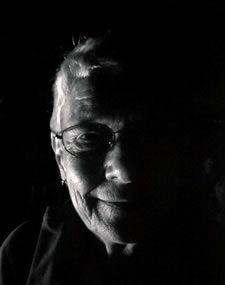 |
Dharma Gleaningsbycynthia rich
|

|
September 22, 2013—September 24, 2013
September 22, 2013
At the Questhaven retreat two weekends ago, I practiced with pain in a new way. At the last retreat Bob advised me not to stay with pain doggedly once I no longer am able to bring equanimous awareness to it. Freedom from that pressure probably made it easier to experiment this time with a practice I learned from Ashim Tejaniya: Instead of concentrating on pain, at the very first hint of resistance, go to a place in the body that is still relaxed. For me, instead of my back pain, I visited the front of my chest which was relaxed. Like Bob, Tejanyia advises us to visit the pain only when we can do so with equanimity.
As I gained a bit of confidence, I decided to go directly for the prize, as it were—staying with the pain with equanimity. Because of what I’ve learned from emotional pain, I decided to approach the physical pain in a similar way. I went to my back, and instead of “dropping the story”, I dropped all consciousness of the physical pain and instead focussed intense concentration on the aversion—the immense pain of fighting, trying to end, despairing, resisting, complaining, hating. I forgot the pain and made myself stay in that place of negativity—or perhaps not staying with it as much as facing it head on in all its ugliness. I could feel its hurtfulness. As I persisted in examining it closely, I could see clearly that it was not the pain but the ugly aversion that was—I used very non-Buddhist language—my enemy. I used my muscles to lift it as if it were a heavy weight in my chest—another time I might picture a green plastic trash bag that I could stuff all of the aversion into and haul it away.
At that moment I was flooded with happiness.
Of course, this was only a kind of internal enactment of the central Buddhist concept that it’s not the pain but the suffering we lay on top of it which creates our misery. What I experienced felt much weightier than a “second arrow”, but that is what it was.
And of course, I knew that I had not resolved my relation to physical pain forever. No, I saw these as baby steps, the merest beginning. What brought me such joy and lightness was the knowledge that this is truly the path, this is the clear direction of my growth with physical pain, however long it takes me. Since I already know the rewards from comparable work with emotional dukkha, my confidence can be deep.
A light touch. At one point I caught myself thinking (or believing without thoughts): If it would just stop hurting, I could practice more with my pain.
September 23, 2013
A classic struggle of new meditators (and often older ones) is what to do with thoughts. The response is usually, “Don’t worry about thoughts. Everybody thinks. That’s what the mind does. Just observe them.” This is skillful means, but it does nothing to dislodge our deep belief that we need to think, that we are wasting our precious lives if we are not thinking. It doesn’t point us to the larger reality that we can (see October 9) live far more happily and richly with many fewer thoughts.
Of course we don’t want to discourage folks from meditation by doing anything to suggest that “good meditators” don’t think. It’s more a matter of gently questioning their deep-set belief in the intrinsic value of thinking, just as we begin to introduce the concept of non-self long before anyone is ready to experience it. The concepts of non-thinking or non-self do not need to be presented as goals, just as little previews of reality.
Although we encourage meditators to “let their thoughts go like clouds,” that doesn’t move us towards questioning the inevitability of thinking.
A yoga teacher the other day gave a suggestion that seems a much more effective way to help people find a place beyond thoughts. She said: “Release the words. Just let the words go. Be with the experience.” I imagine that would produce so much less resistance—it’s so much more obvious that words are just words, while thoughts are seen as valuable and important. And of course, when we release words, we are releasing our thought-addiction.
September 24, 2013
More of our thinking than we realize is about how we can get what we want. When we become disenchanted with all that wanting, most of our thinking can naturally fall away. While we are still living within our thinking minds, we are like children trapped in a noisy attic.